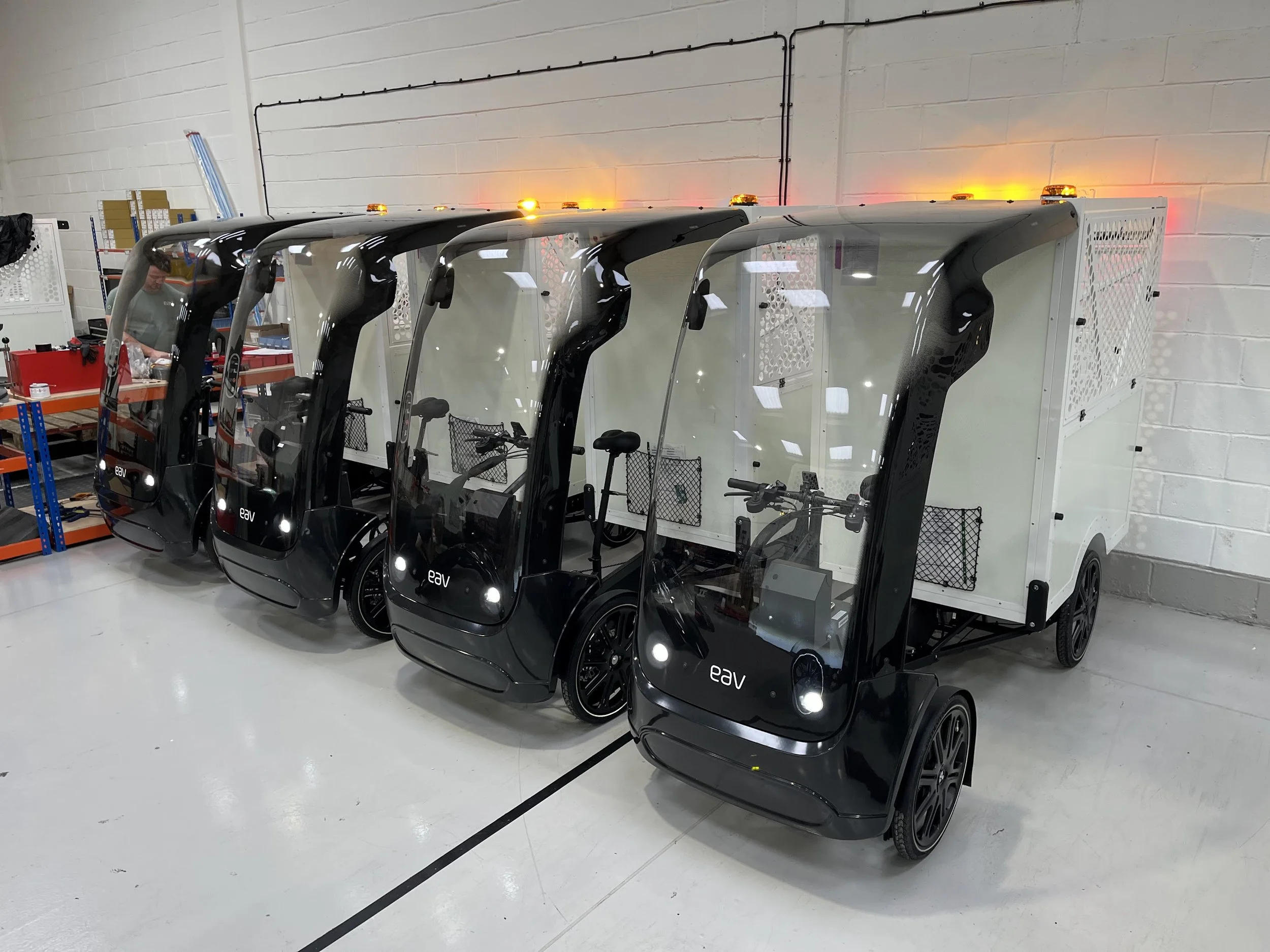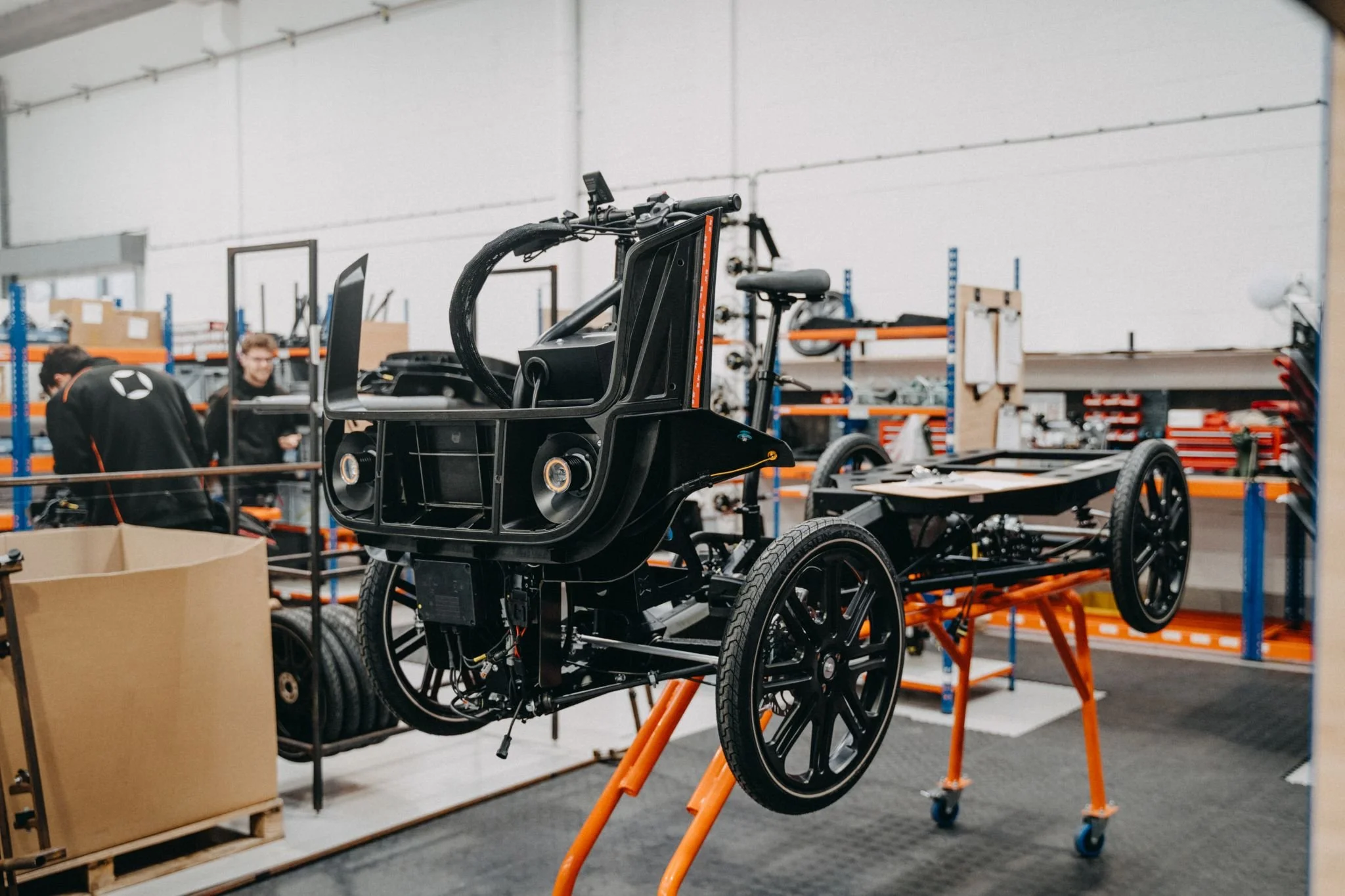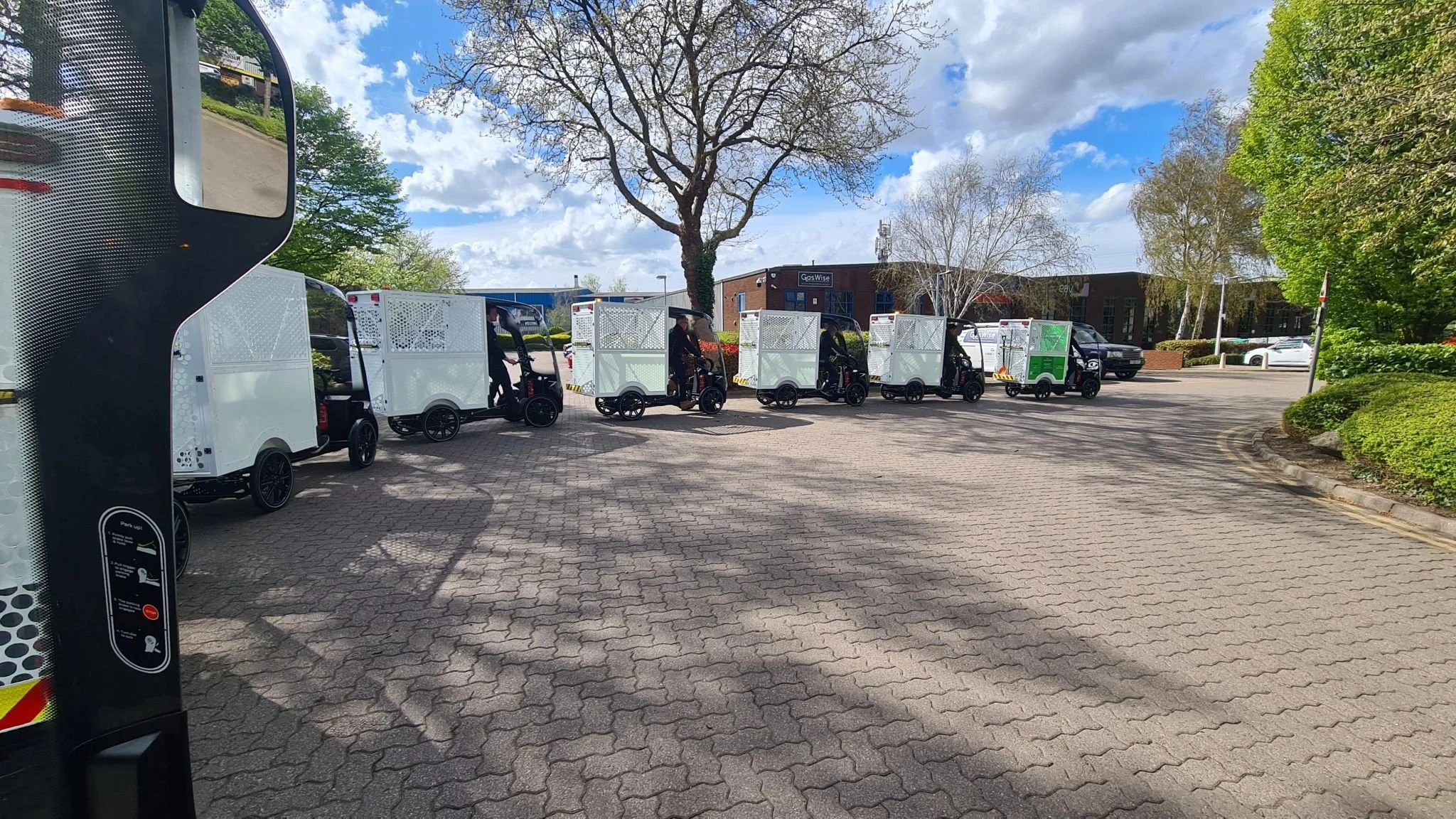We Fell into the FOAK Valley of Death — Here’s what I learnt…
In a week, we’ll be heading to Utrecht to celebrate the advancements in the cargo bike sector at the International Cargo Bike Festival (ICBF).
But that date also marks six months since EAV fell into administration — an event that resulted in the entire workforce being made redundant. The business was sold to new owners and lives on under this arrangement.
So, how did it get to that point?
This post is a reflection from my perspective as a Design Engineer, who joined EAV four years after its initial formation and shortly after a significant change in the company’s management structure.
If we want to truly change societal behaviour around logistics, we need to reflect, learn, and adapt collectively. We need solution providers to avoid falling into the same traps that their predecessors did.
Here’s my view from the coal face on how we fell into the infamous FOAK (First Of A Kind) Valley of Death.
EAV Cage Bikes - Lined up & ready for customer fulfilment
Acknowledging My Perspective
I had the very privileged position of joining the business after many of the founding decisions had already been made. Hindsight is always 20/20 — and even more so when you aren’t the one making those high-pressure decisions or providing the funding.
The founding team at EAV played a key role in shaping the vision and ambition for four-wheeled electric quadricycle logistics. That’s no small feat, especially when you’re based in a country that’s historically behind the curve on e-mobility.
This isn’t a personal critique. No shots are being fired here. It’s an objective reflection intended to help others in the industry learn from what we experienced.
These views are entirely my own and based on my experience during my time at EAV. They shouldn’t be taken as a critique of any individual, management decision, or the company’s current ownership.
EAV Chassis - Mid-build in the former Banbury factory
1. Cash Is King
EAV was funded during the mobility boom that saw record levels of capital flow into electrification and active travel.
Within that environment, it’s understandable that there may have been a strong emphasis on innovation and growth over short-term commercial pragmatism.
To avoid this trap:
Keep BoM cost, inventory cost, and margin contribution front and centre in every business decision. A cross-department governance process — like a tollgate system — can help enforce commercial discipline.
2. Keep Supply Chains Simple and Agile
In the early phases of a hardware startup, your goal is to validate your assumptions as fast as possible. That means iterating on your MVP quickly and getting it into real customers’ hands for feedback.
When your supply chain becomes complex or overstretched, your ability to make rapid, meaningful improvements is restricted.
To avoid this:
Keep your supply chains simple and proportionate. Choose suppliers that match your scale and are open to collaboration, experimentation, and course correction.
3. Maintain Modularity in Your Product
To iterate quickly, your product must be reconfigurable as your understanding of component requirements evolves. In our case, this was an area that presented challenges.
Wherever possible, design subsystems so changes can be made without impacting the wider structure. Integrate Design for Assembly (DFA) reviews into your development milestones. Invite cross-functional stakeholders to critique modularity and serviceability.
Leverage — don’t reinvent — the 100+ years of R&D that already exists in the bicycle industry. Challenge convention, but do so with caution.
4. Prepare to Scale
Spending time with our suppliers and assembly team made it clear that our vehicle’s construction posed scaling challenges.
Once you’ve validated your MVP, production scale-up is the next natural step. Ensure your engineering team is designing with manufacturability and throughput in mind early on.
You don’t want to discover that your path to profitability requires a complete redesign.
5. Don’t Confuse the Customer with the User
Human-centred design is critical — but in the commercial vehicle space, the user and the customer are often different people.
Operators might love a feature, but if it increases downtime or maintenance costs, fleet managers may not.
Balance the needs of both. Consider uptime, operating costs, serviceability, and service intervals as equally important to user experience.
6. Help Customers Adapt Their Infrastructure
E-cargo bikes don’t exist in isolation — they’re part of a larger system shift.
Many fleet operators have sites designed entirely for internal combustion vehicles. Introducing cargo bikes requires infrastructure and process changes they may not have anticipated.
Bring customers along that journey. Share insights from other deployments to help them prepare and de-risk adoption. This becomes a competitive advantage — and helps keep delivery schedules on track.
7. Your Team Needs to Evolve with You
Hardware startups evolve fast. The skills needed to get from zero to one are often different from those needed to scale and commercialise.
It’s unrealistic to expect that every early team member will be the right fit at every stage — and that’s okay.
Recognise those transitions early, make changes decisively, and ensure the team remains aligned, focused, and moving at the right pace.
8. The Macro Narrative Matters
Whether we like it or not, wider narratives around climate scepticism and net-zero influence stakeholder sentiment.
Personally, I see this as a temporary blip — the science is clear, and the momentum toward decarbonisation is unstoppable — but these shifts can still hit startups hard in the short term.
9. Investor Fatigue Is Real
All of these factors ultimately contributed to the closing of our chapter at EAV: loss of investor confidence.
When progress toward profitability isn’t fast or visible enough, investors get nervous. But in my view, that didn’t fully reflect what was happening on the ground.
By the end, we had a growing order book, a positive-margin product for the first time in the company’s history, and plans in motion to address key operator feedback.
Despite those achievements, we continued to battle the residual effects of earlier challenges.
I’m genuinely optimistic that the change in ownership has given the company room to evolve and thrive in its next phase. The foundations are there — and I wish the current team every success in building on them.
Final Thoughts
Hardware startups — especially in the mobility and decarbonisation sectors — are hard. The FOAK Valley of Death is real.
But if we share lessons openly, we can help the next generation of innovators cross it faster and with fewer casualties.
EAV’s journey was a bold and ambitious one, and I’m proud to have played a small part in it.
EAV Cage Bikes - Lined up and heading off to their new home…



